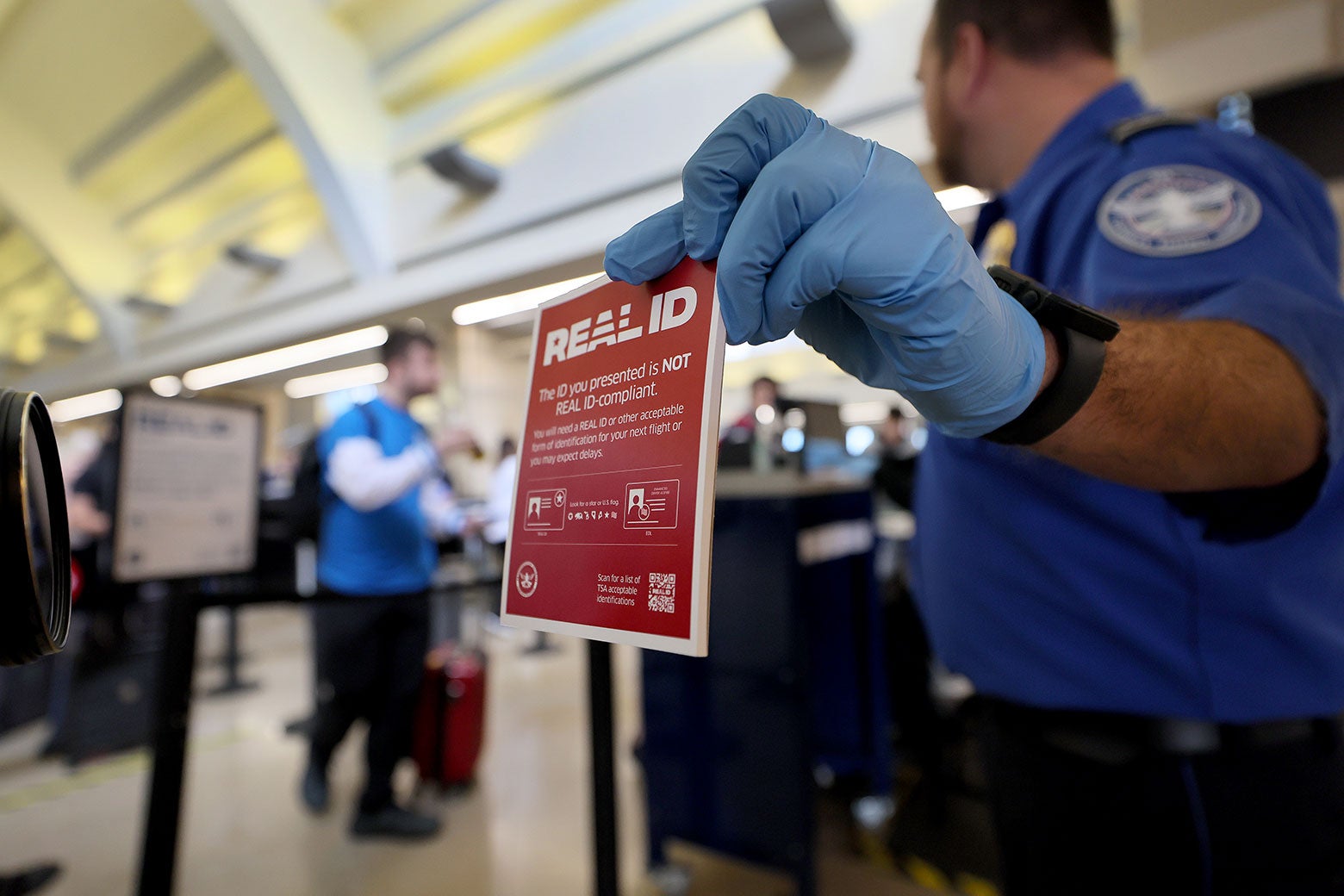The deadline was today. And yes, the deadline has obviously been pushed back again.

Sign up for the Slatest to get the most insightful analysis, criticism, and advice out there, delivered to your inbox daily.
Get thee to a DMV.
That has been American airports’ increasingly desperate message to travelers over the past two years, in anticipation of May 7, 2025, the date when the TSA was to begin requiring a “Real ID” or passport to board a plane. And as that day edged closer and closer this spring, fear of missing a flight with an old driver’s license caused pile-ups at DMVs and government offices as Americans scrambled to get the documentation in time.
On Tuesday, however, DHS Secretary Kristi Noem announced that air travelers without Real ID wouldn’t be denied boarding after all. And on Wednesday, the lines were longer at DMVs than they were at airports, where TSA checkpoints seemed to be handling unprepared fliers with ease.
And so the real, REAL ID deadline to get on a plane has been pushed back for the fifth time, to May 5, 2027, by which time the Real ID Act of 2005 that established the requirement will be old enough to have a beer at the airport.
It’s an appropriate gesture at a moment when aviation safety seems more threatened by the people running the airports than the people passing through them. But it is also a lesson in the surprising challenges of getting everyone an ID, with implications for elections.
In some ways the Real ID delay feels like one more punt by a Trump administration that is quick to fold, whether on tariffs or TikTok. But the signs of a Real ID cave have been there for months. In January, the TSA established a rule that pre-emptively gave it the option to push Real ID enforcement to 2027. In April, as the TSA threatened that “Real ID full enforcement” was a month off, it also offered a 747-size loophole: passengers without the card could expect … delays and additional screening with the “possibility” of denied access, not a taxi to the Greyhound station.
If you suspect that Homeland Security is beginning to sound like the boy who cried wolf, DHS officials agree. The point of the Real ID was to establish a national standard for driver’s licenses. On the one hand, this was not an unreasonable requirement, judging by the many silly-looking fake IDs then in popular circulation. At the same time, the endless delays to implementation and lack of associated security incidents cast doubt on whether the law is necessary at all.
In any case, as any high school teacher can attest, repeated extensions have given the government a credibility problem. As DHS put it in the January rule: “because of a history of REAL ID deadlines being extended, DHS believes that the public may continue to expect that additional extensions are likely and not feel urgency to obtain a REAL ID-compliant card… DHS expects that there is some confusion, lack of awareness, and apathy associated with the May 7, 2025, deadline.”
Indeed: As of January, DHS estimated that just 56 percent of Americans’ driver’s licenses and other IDs were REAL ID-compliant. Anticipating a chaotic scene in airports this week, the government developed a compromise—another two-year extension, but with stronger language.
That was justified in security terms (dealing with disgruntled, unprepared passengers could distract from The Real Threat), but there’s another piece of the calculus: Air travelers make up a tiny slice of the American public but wield great influence, and even the smallest airport meltdowns make easy fodder for the nightly news.
Contrast the lenience for air travelers with the intransigence of the drive for voter ID. The Real ID debacle is proof that even well-off Americans—the ones who fly frequently—can have trouble managing demands for documentation on a deadline. Yet Republicans routinely say having a photo ID should be required to vote, and a growing map of states require it. The latest iteration is the Save ACT, which just passed the U.S. House, requiring proof of citizenship to register to vote.
The evidence is mixed on the extent to which existing laws disenfranchise voters, but they certainly don’t make it easier to vote—more than 20 million Americans over 18 do not have government-issued photo ID, according to one study. But it’s hard to imagine the government bending over backwards to give them another way into the polling place, as we’ve been witnessing this week, and really, for years at the airport. If only preserving access to the ballot box were as important as getting to Disneyworld.
Sign up for Slate's evening newsletter.









 English (US) ·
English (US) ·